The Ministry of Defence has clarified the distribution of first-person view (FPV) drones across the British Armed Forces, while confirming that further operational details remain classified due to sensitivity.
In response to a written parliamentary question from Ben Obese-Jecty MP, Minister of State Maria Eagle confirmed that the British Army has so far procured 450 FPV drones, with an additional 3,000 scheduled for delivery in August 2025.
The Royal Navy and Royal Air Force, meanwhile, have each acquired a small number of FPV drones for testing and evaluation purposes.
These evaluations are being conducted by the Defence Uncrewed Systems Design Authority and the Air and Space Warfare Centre, reflecting a broader trend in the UK military’s exploration of uncrewed and autonomous technologies.
“Aside from MOD’s procurement of circa 30,000 FPV drones for Ukraine,” Eagle explained, “the Army has procured 450 FPVs with a further 3,000 for delivery August 2025. The Royal Navy and Royal Air Force have procured a small number of FPVs for test and evaluation.”
Obese-Jecty had also asked for clarification on how many of the drones procured carry NATO stock numbers, and what those numbers are. Eagle responded that such details are not being disclosed publicly.
“Details on specific FPV drones for operational purposes are sensitive,” she noted, “and therefore any further commentary, including details of NATO stock numbers, would be inappropriate.”
The reference to 30,000 FPV drones for Ukraine reflects the UK’s substantial support to Kyiv amid its ongoing conflict with Russia, including the supply of uncrewed systems and other battlefield equipment.
While the Army has clearly taken the lead in bulk procurement, the involvement of the RAF and Royal Navy in testing indicates a cross-service approach to adapting uncrewed capabilities in line with the ambitions laid out in the 2025 Strategic Defence Review. That review called for a high-low mix of platforms, including mass deployment of expendable or semi-expendable systems like FPV drones.
What is an FPV drone
An FPV (First-Person View) drone is a type of unmanned aerial vehicle (UAV) or drone that allows the pilot to experience the flight from the drone’s perspective. This is achieved by transmitting a live video feed from an onboard camera on the drone to a pilot’s goggles or screen, giving them a “first-person” view of the environment as the drone sees it.


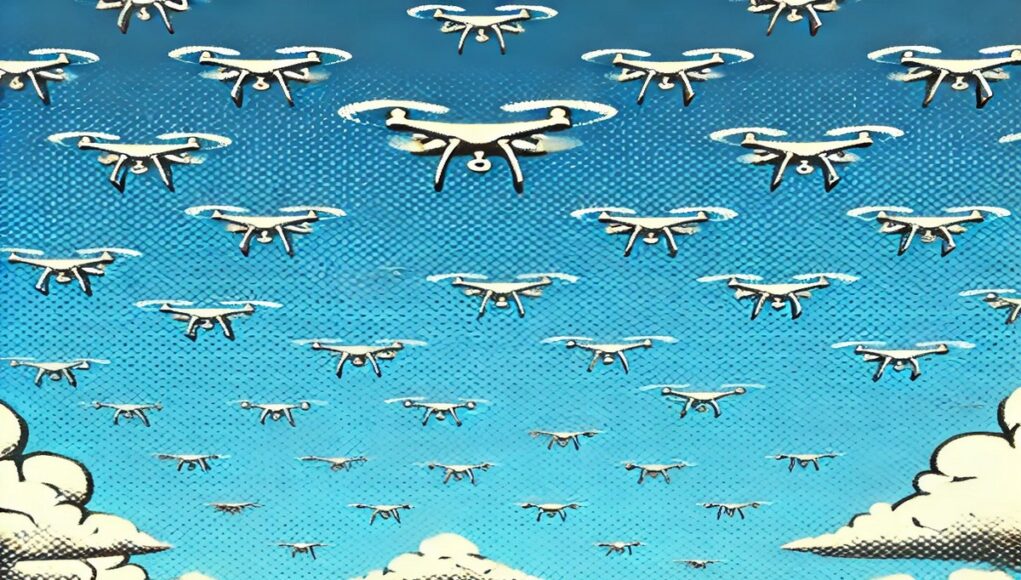
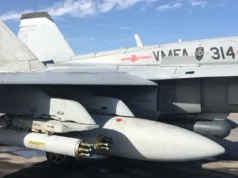

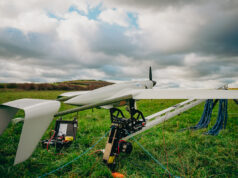
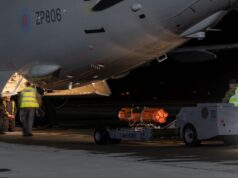
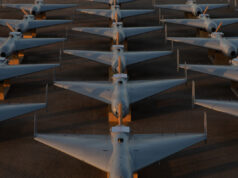
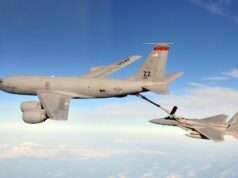
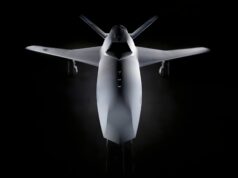

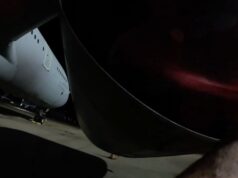
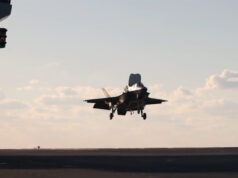

What matters most is the ability to scale up deliveries or manufacturing quickly. Technology moves on so fast that there’s little point building up big stockpiles of FPV’s. But glad to see the MoD recognise their importance!
I would say the most important thing is to get troops trained in using them. The tech is changing fast and so not currently having massive stocks whilst they figure out the right buy semi makes sense (on the assumption we aren’t going to need them in a war situation in the short term) but training on how to control and use them could still happen using cheap off the shelf drones.
The numbers involved are small but we don’t need huge numbers of FPV drones but will need the ability to mass produce drones in their millions and then network them with AI support.
The armed forces need to be familiar and competent with the technology. For reference Ukraine and Russia have deployed hundreds of thousands of these drones.
Mr Bell, there is no argument about the expansion of the drone; their performance in and by Ukraine has been a revelation. However, if AI is a major component of this technology, we must be wary of some alarming evidence recently discovered; some won’t switch off! Autonomy is beneficial, but a human kill switch is necessary, or we face a worrying future. I call it the ‘Spock Factor’ whenever Captain Kirk gave an order that Spock questioned, he used the term ‘Illogical.’ If the military is to use drones widely, then we must have complete control, and the answer to that is potentially NO! If AI can countermand instructions, then it is possible to interact with other AI systems globally, friend or foe, before making its decision?? Ultimately, AI could bring warfare to an end due to Mr Spock’s assumption it’s ‘Illogical.’
I’m not sure I trust a human being in the loop that much more than an AI. An AI isn’t something from science fiction, capable of thinking like we do. If we don’t tell it to communicate with enemy AIs, it won’t. The biggest difference between an AI and a person making a kill decision is that we are used to a person doing it. We can legislate and create these things called war crimes, which gives society a false sense of control. (Like there aren’t any war criminals.) You can’t hold an AI to account, especially if it’s built into a one-way munition.
Does that really matter, though? The objective should be to reduce the number of war crimes not to be able to kick someone’s backside after the fact.
AI drones are fine for an all our war situation like Russia v Ukraine where survival is at stake for Ukraine and Russia couldn’t care less who they kill Russian or Ukrainan doesn’t really matter as long as another meter of territory is taken.
For the west it will be way more of a problem as drones killing civilians due to mis identification would not be permitted in the typical arms length war we fight.
And yet it happens. As does blue on blue. If that can be reduced, we should accept a smaller number of civilian fatalities dished out by robots. But we won’t. We’re not at all logical about it.
Sadly Jon, some AI systems in the future will outwit the humans, self-create and ultimately determine man’s future. The efficacy will be determined (initially) by man and hopefully will be used for good, however, those who wish us harm will programme their systems only to discover they may well become victims of their own creation along with the rest of us.
You’re overreacting. A company whose business model is based upon AI safety conducted an experiment where there were able to sometimes get the AI to not shut down. Basically they told it to do a job, and then told it shut down while doing it his job. The way the AI was trained, it prioritised finishing the job it had been given to complete, over the shit down command.
Get a grip and stop panicking.
I’ve printed your comment and I’ll frame it for when the day AI turns to its creator, then goes its own way. I foresaw the threat the drone could inflict on us all when you could just buy one in the high street. Now they are a major offensive weapon of choice….panicking, you are bloody right I am.
(a) No you haven’t, don’t lie.
(b) You really shouldn’t base your opinions on AI based upon Hollywood movies. The Royal Institute did a series of lectures last-year on AI, I suggest you look them up on YouTube.
(c) Everybody saw the threat of FPV drones, you’re not Cassandra or some scientific visionary.
If you search YouTube for “MICRO DRONES KILLER ARMS ROBOTS – AUTONOMOUS ARTIFICIAL INTELLIGENCE – WARNING !!” posted by CS Consulting you’ll find a spoof product launch of an AI controlled killer drone, FROM 7 YEARS AGO, and the idea wasn’t new then. 🤷🏻♂️
Spock, the tone of your post is too personal. We all have opinions and access to information.
I remember reading science fiction from.45 to 50 years ago where AI weapons fought each other for hundreds of years after they had wiped out the civilisations which had created them.
So the idea of AI out of control is far from new.
It would be a good start asking people with 3d printers to be available to produce parts. I would sign up to that.
FACT – If you were sitting in a trench on the front line and 30 russian vehicles were coming at you, and you are low on equipment, but you have 30, 50 FPV drones set up ready, then you are going to use them to attack the russians
Or you can surrender or fall back…
So saying a British Army or even a Royal Marine section, platoon, company, or battalion won’t need many drones is a recipe for defeat and a russian breakthrough in the lines
Everything is needed…
Planning ahead and improvisation, fundraising for having plenty of drones, is helping to fight back
80 % of hits against russians are drone warfare, most of them funded by ordinary folk with barely a £ in their pocket
Having other equipment to fire back as well is helpful if its available
It would be funny if it wasn’t as serious. HMG claims it will do X or Y and be a world beater. Lets not forget all the projects that appeared to be groundbreaking, but got scrapped. Ones like Project Mosquito that got squashed by the MOD, and why? The MOD said, “the project would not proceed beyond the design phase due to more beneficial and cost-effective “additive capabilities” being available”. Nothing replaced it. A lot of people still underestimate just how fast Ukraine’s drone production has scaled. If you look at FPV drones alone, the numbers are staggering.
Right now, Ukraine is turning out around 200,000 FPV drones every month. That works out to roughly 50,000 a week. And this is not from one centralised factory. There are now well over 150 manufacturers across Ukraine. Some of them are producing up to 4,000 drones per day. The ecosystem is decentralised and highly agile.
To give you perspective, in 2024 Ukraine produced around 1.5 million FPV drones. The target for 2025 is over 2.5 million. And with the innovations coming out of the sector, I would not bet against them exceeding that.
Compare this with Russia’s production, which is much more centralised and bureaucratic. They are also ramping up, but the flexibility and scale Ukraine has built into its supply chain gives it an edge, especially in FPV class drones where speed and adaptability matter.
Week by week, Ukraine’s drone-industrial base is becoming one of the most important factors on the battlefield. The pace of innovation is relentless. FPV drones are cheap, scalable and effective. That is why they are now core to Ukraine’s defensive strategy.
💯👍
So many questions..🤔
For the British Army, I want to see what they are buying! I hope they have not tried reinventing the wheel with drones and kept it simple. Stick to the cheap designs used in Ukraine
They went over to Ukraine on a fact-finding mission and saw firsthand what one of the Drone manufacturers was doing
It is run by a guy to whom I donate a lot of money and support!
What are they used for?
Where in the structure of the Army are they to be used? Drone Platoons\Companies\Battalions etc
PS, did anyone see the latest Spiderweb attack on the train😁😁
John well done you I have been involved with something similar and have been over there a couple of times. I agree with you be interesting to see how the Field Army is going to deploy UAS orbat wise. Have been flying a desk for quite some while but talking to friends still serving in Battalion it seems the approach that is evolving within the Brit Infantry is that UASs sections or Dets will be deployed across the Battalion and wil be fully integrated at all levels Platoon, Company , Battalion rather than in one dedicated UAS Company or Platoon say within HQ Coy or Fire Support Coy perhaps. Sources indicate this will involve UAS of different sizes and range capability which will reflect the role of the sub unit within which deployed, say with sub 250g drones similar to the DJI Mavic series and grouped at platoon level within platoon HQ say with a 4,000 metres range and with a larger quad copter type system within Coy HQ working alongside the Coy Signals Det and with a range out to 8,000 metres plus. UAS would also be deployed across the Battalion within specialist sub units, anti tank , mortar , Recce with the type, range and capability of drone depending on the requirement of that sub units specific task and need. I have not compromised OPSEC here , all of this has been discussed in great detail in open source publications including the Army’s excellent in house publication Soldier Magazine.
Thank you mate 👍
That’s the first time I’ve seen any sort of “rough idea” of what they are looking at doing!
Especially from any battalion chatter or any publication😁👌
Hmm, so Drone \ UAS sections in HQ, etc with drone types\ sizes used for each situation, reconnaissance (recce) and strike, etc🤔
I always thought that, at minimum, a Drone Unit within a Fire Support Coy would be a BIG help
So it does seem there is progress being made
“For the British Army, I want to see what they are buying! I hope they have not tried reinventing the wheel with drones and kept it simple.”
Very simple. They asked Lockheed Martin to sort it for them. True for most up intil now.
“Stick to the cheap designs used in Ukraine”
Most MOD purchases coming before now would have been decided/tested two or three years prior and contracted the year before (and that’s “at pace” or UOR speed). Most will have been expensive American drones, mostly from Lockheed Martin on Project Tequila. After all, why wouldn’t they select their own products and charge whatever they could get away with? Purchasing tens of thousands of drones for Ukraine is done by a different group in the MOD who were told to get on with it. There was no precedent and no rules. Drones for our Army will have had to go through old slow procresses with ten layers of governance.
There’s been a lot of talk of changing the processes of late. That’s a huge move forward. To get acceptance that processes have to be changed is surprisingly hard as it have also had to go through ten layers of governance, each one saying that the others can be cut but but not them. Actually changing the processes might be easier than getting agreement for the change.
I don’t think we need to wait to see if it can now be done. In April the Army ordered 180 FPV drones from Viking Arms (based in Harrogate) for about £250K. One of the press articles showed a “representative” photo entitled “A swarm of UK-made drones”. Cheap and locally sourced! What were they thinking? Better yet, the report was that they’d be delivered in 19 days. So the Army should already have them and probably have already trained some Army instructors to stand up a training fleet. However — you knew it couldn’t be all good news — there’s a good chance that the drones are not actually British and that Viking are just an importer. Looking through Viking’s online catalogue the only drones I can spot are Israeli, but the drones for the Army could have been sourced from anywhere – even Britain. Fingers crossed.
The main point is the procurement was cheap, fast and obviously off the shelf. Which is undoubtedly very good news.
Saw an article yesterday with a Brit who supplies UKR saying the designs the MoD are coming out with are hopeless and would not be suited to real world UKR conditions.
I hope he’s wrong and MoD are not about to waste a fortune on expensive Drones that re invent the wheel.
I’ll try and find it again, I don’t recall his name.
Out of curiosity …who was the Brit?
Do you know their name
Hi mate.
As I said, cannot recall. I’ll look.
Ok.
Richard Woodruff.
Article on “LBC”
Do you know him? Is he talking cobblers?
He’s saying that the RAF drone isn’t fit for purpose, but for his purpose, FPV attack drones, not the RAF’s purpose which was (as usual) to test, in this case whether the drone can be flown from Chinook. It’s fitted for EO/IR ISR and is clearly not a production drone of the kind Woodruff is used to. Is it any surprise that it’s terribly built?
The right criticism perhaps is that it should be a production drone, the very point in the article that Jack Watling was quoted on. The armed forces need to stop focusing on trials and get on with production. I may recall hearing you say something similar, Daniele: you, me and half the commentators on here!
Yes, i know him, I help fundraise for his drones \ fundraisers via NAFO 🫡💯
His group is one of the best at making drones!
£250 per drone!
They know their stuff
The Royal Navy and Royal Air Force have procured a small number of FPVs for test and evaluation.”
You couldn’t make it up !!! Still fannying around with testing.
Bonuses all around.
The old record wearing very thin now.
Sadly Jon, some AI systems in the future will outwit the humans, self-create and ultimately determine man’s future. The efficacy will be determined (initially) by man and hopefully will be used for good, however, those who wish us harm will programme their systems only to discover they may well become victims of their own creation along with the rest of us.
Yet again to little to late. Sleepwalking.
Surely it is about having the CAPABILITY and CAPACITY to design and produce such things at scale. having a shed with just 450 current drones is not the same thing.